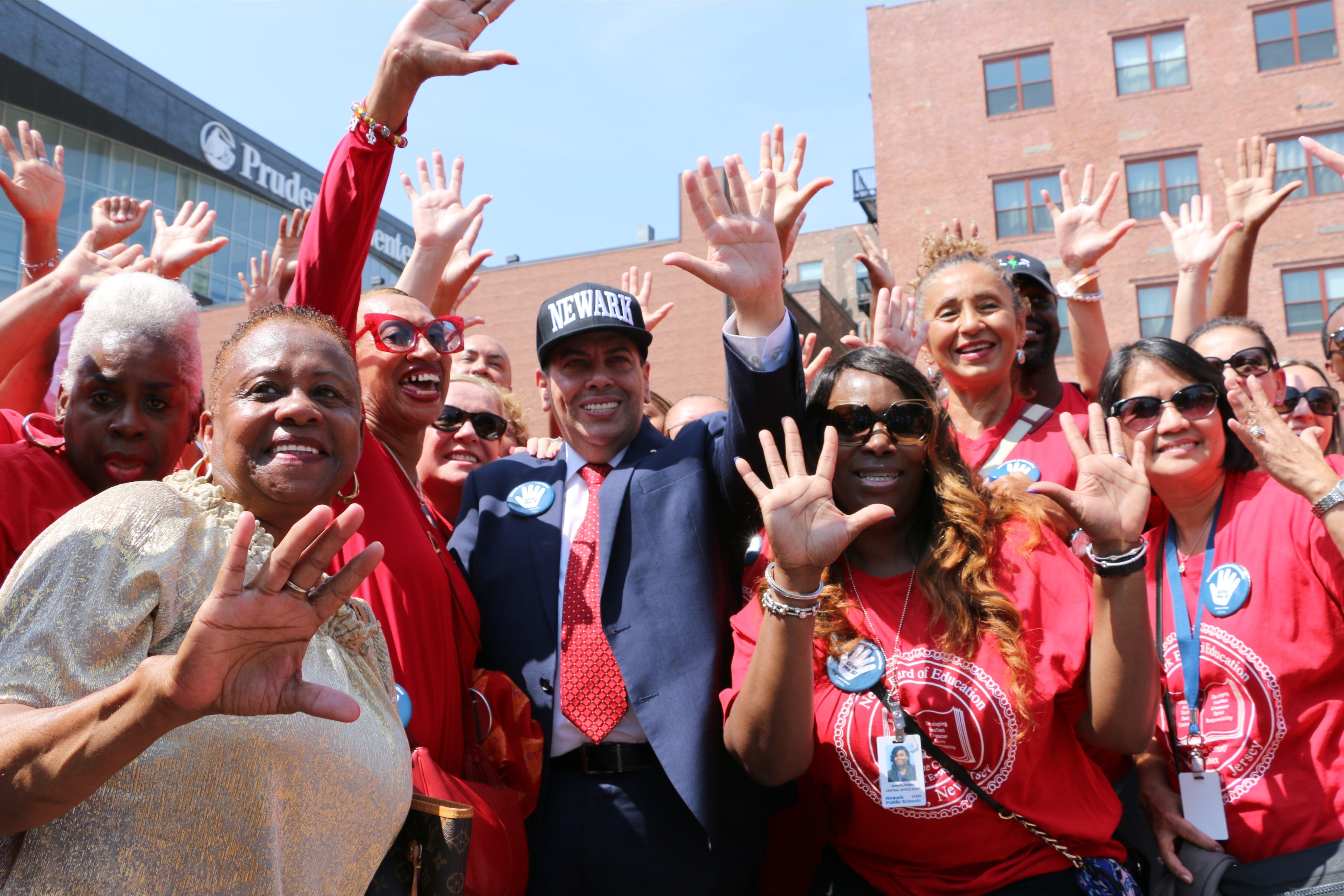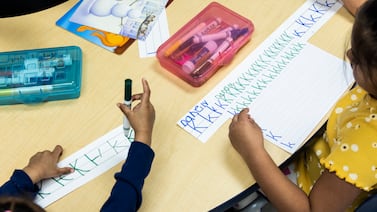By all accounts, many Newark students struggled to make it to their online classes this spring.
Thousands of students initially could not get online after school buildings closed, while others had to babysit siblings or work during the school day. Teachers said some students participated in remote learning only sporadically and a few disengaged completely.
Yet, on paper, attendance was nearly perfect in New Jersey’s largest school district.
On average, 99.8% of Newark students were present for each day of remote learning, according to district data from March 16 through the end of the school year in June. Chalkbeat obtained the data through a public records request.
Newark’s claim that nearly 100% of students took part in daily remote learning during the height of the coronavirus pandemic contrasts sharply with attendance data from several districts in other states, which reported that anywhere from 15-40% of students were not engaged during that time. Newark’s rate would also represent a big improvement over the district’s 91% average daily attendance rate during the same period last year — and contradicts anecdotal evidence from teachers.
So how did Newark achieve near-perfect attendance this spring? It appears to have benefited from a new state policy: New Jersey districts could mark every student present during remote learning unless a district “knowingly determines a student was not participating.”
The state says it was important not to impose strict attendance policies and penalties during the unexpected shift to remote learning this spring — especially because nearly 90,000 New Jersey students could not get online from home. Most experts agree, noting that districts in some states even stopped taking attendance last school year.
But several experts also said New Jersey’s policy likely prompted districts to under-report absences, obscuring the true number of students who were disengaged and may now need extra support. This school year, they said, New Jersey and other states should tighten up their attendance policies so that schools accurately track and report which students participate in remote learning — and which don’t.
“How can school leaders address what they can’t see?” said Jennifer Bell-Ellwanger, president and CEO of the Data Quality Campaign, which promotes the use of data to improve student outcomes. “No kid should be invisible.”
Attendance data vs. reality
Newark’s 99.8% attendance rate differs drastically from what several teachers told Chalkbeat they experienced this spring.
Teachers used different methods for taking attendance, including whether students typed a morning message, attended live-video classes, or submitted work. Most gave students leeway, so if they couldn’t tune in to a live class they could turn in work later and still be marked present.
Even with that flexibility, some students did not engage at all, according to interviews with teachers at multiple elementary and high schools.
One seventh-grade teacher said she didn’t hear from about a quarter of her 59 students on any given day. A high school teacher said only about half his 30 students in one class showed up for live online lessons. A third grade teacher said less than a third of her 18 students attended video classes, and many turned work in late or not at all.
At one elementary school, an attendance counselor had to remind families in April that “school is still in session,” according to a letter posted on the school website. “If your child’s attendance does not improve,” the counselor wrote, the student’s grades could suffer and parents could face a school meeting, a court hearing, or a referral to “child welfare services.”
Despite those challenges, the district’s data says only three of 61 schools had lower than 99% attendance during remote learning — and 41 schools had 100% attendance.
“I can guarantee you attendance was nowhere near 100% last spring,” said a teacher at a magnet school who, like the other educators interviewed for this story, requested anonymity to avoid retaliation by the district. “There’s absolutely no way that’s possible.”
Two teachers said the reason for the inflated attendance rates is that students were automatically marked present in PowerSchool, the program Newark uses to track student data. While teachers were responsible for checking in on students and monitoring their attendance, school administrators told teachers not to enter it into the official database, the teachers said.
“They gave us the directive not to put anything in PowerSchool,” a high school teacher said. A middle school math teacher said she tracked her students’ attendance in a spreadsheet and told guidance counselors when they were absent. “But officially, they were marked present,” she said.
Spokesperson Nancy Deering did not answer questions about how the district tracked attendance this spring and whether students were automatically marked present in PowerSchool. “The guidance for attendance can be found on the state and district’s website,” she said in an email.
On the district website, the spring school-closure plan says attendance was based on students logging onto an online platform and attending video classes. Yet Superintendent Roger León repeatedly said attendance was based on students completing assignments.
In May, he suggested that any student enrolled in remote learning, or “home instruction,” would qualify as present.
“It would kind of be easy for your attendance to be good,” he told the school board, “because all you have to do is be in your house.”
Unclear rates
León did not publicly share the district’s attendance rate this spring, though he did tell the board it was “really, really good.” Chalkbeat filed a public records request in July after the district refused to release the data.
But some districts did reveal their spring attendance numbers — and they were far from perfect.
In April, Los Angeles said about 75% of high schoolers logged into an online portal each day during a particular week, while New York City said about 84% of students had some kind of daily interaction with their schools, which could include answering a teacher’s phone call, turning in paper assignments, or logging into an online class. In May, 77% of Chicago students logged on during a certain week, while just 57% of Philadelphia students did the same.
What was New Jersey’s statewide attendance rate during remote learning?
The state education department cannot say because it “doesn’t break down student attendance by different seasons,” said spokesman Michael Yaple.
Better attendance policies
Whatever the rate, New Jersey took pains to ensure schools and families were not penalized if students had trouble showing up for remote learning.
In addition to allowing districts to make “present” the default attendance status this spring, New Jersey, like other states, received a federal waiver that freed districts from reporting how many students were chronically absent.
“It was important to educators as well as civil rights organizations that states not impose rigid, punitive attendance rules that relied solely on online participation,” Yaple said in an email, adding that districts had not prepared for remote learning and many students did not have internet-enabled devices. He also said the state issues guidance, but districts set their own attendance policies.
Peter Chen, a policy counsel at Advocates for Children of New Jersey who analyzes chronic absenteeism, said it made sense for New Jersey to ease its attendance rules this spring when many families were enduring food insecurity, job losses, or illness caused by the pandemic. He added that a primary reason to track attendance is to identify students who need help showing up for class, which most schools continued to do this spring.
Still, Chen warned that the state’s guidance to mark all students present during remote learning unless districts “knowingly determine” students did not participate could give districts a reason not to monitor participation too closely.
“I hope that’s not what any district would do,” he said, “but it does run that risk as a policy.”
States and districts had little choice but to scrap their usual attendance policies — or stop tracking it altogether — as they scrambled to set up distance-learning programs and meet students’ basic needs this spring, said Hedy Chang, the director of Attendance Works, a national group focused on reducing chronic absenteeism.
This school year, states should continue to suspend policies that tie school funding or accountability to attendance, Chang said. But districts must revamp the way they monitor attendance, for instance, by tracking schools’ contact with families and students’ access to the internet and participation in online lessons.
“This is all about problem-solving, not about blame,” she said. “The way you get children to school is you solve the reasons they didn’t show up in the first place.”
Deborah Smith-Gregory, president of the Newark NAACP, echoed that assessment.
“For our children’s benefit, we need to start being honest,” she said. “That’s the only way we can help them.”




